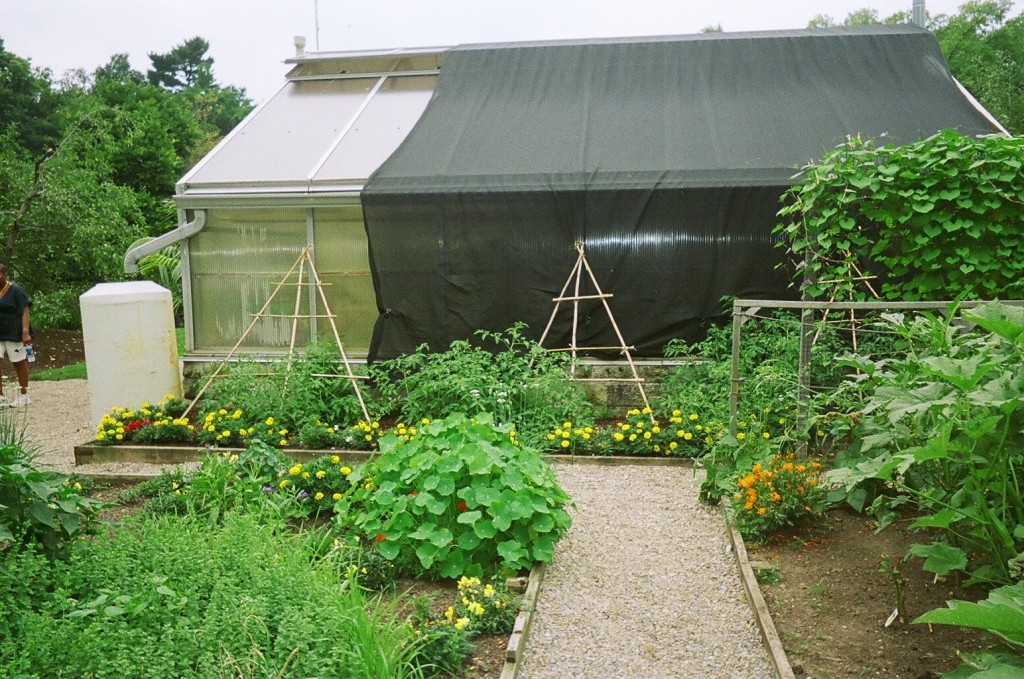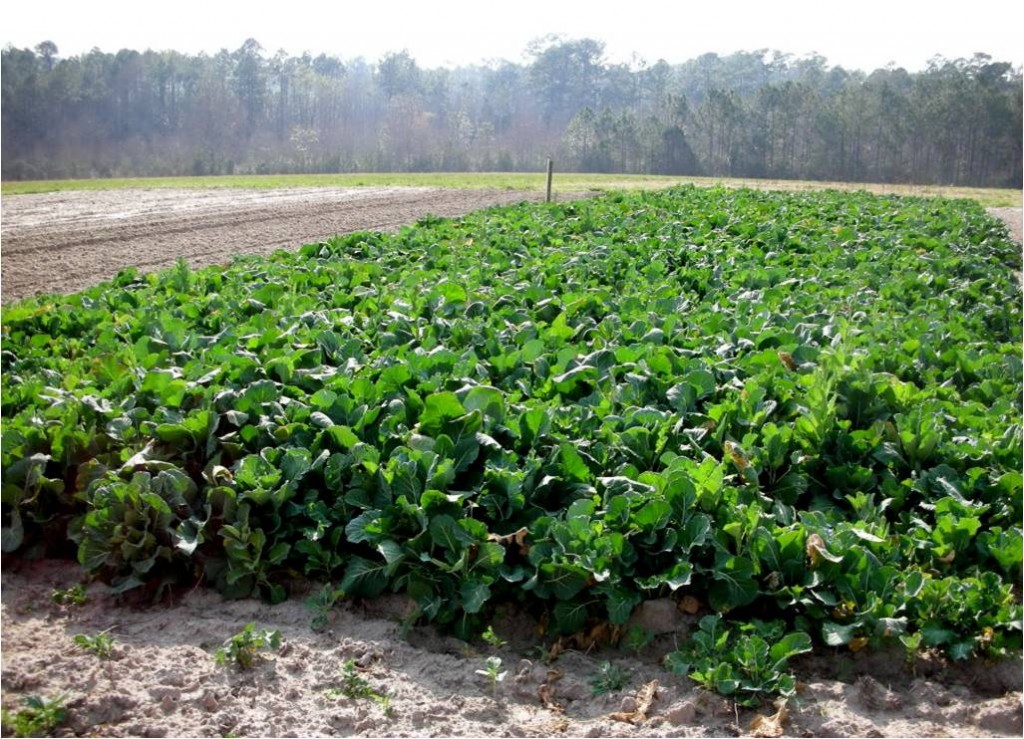by Matthew Orwat | Sep 16, 2013

Azaleas pruned late in the fall will have little or no bloom in the spring. Image Credit: Matthew Orwat
Although Northwest Florida is well known for its beautiful Azalea displays every spring, many do not understand that these shows of bloom could be sacrificed completely by pruning at the wrong time.
Pruning Azaleas in the fall will result in a loss of spring bloom the following year because most bloom on previous years’ wood. This means that they flower on growth put on throughout the previous growing season. If a gardener removes the previous season’s new growth, they are removing the blooms as well.
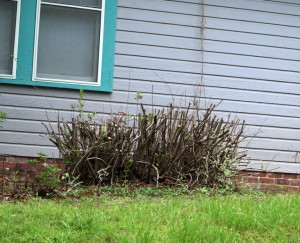
Fall Pruned Azalea. Image Credit Matthew Orwat
So, when is the proper time to prune Azaleas? The ideal time to prune is directly after the spring bloom. This will give the plant enough time to generate abundant new growth, thus maximizing bloom next spring.
For more information on pruning Azaleas or on general Azalea culture, please read the UF / IFAS publication Azaleas at a Glance or check out the Pruning Azalea page on Gardening in a Minute.
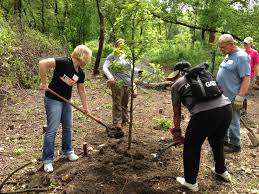
by | Sep 16, 2013
While the recently passed Labor Day is often is touted as the traditional “end of summer,” according to the calendar, fall officially will begin with the fall equinox on Sept. 22nd at 4:44 EDT. In north Florida, however, we know good and well that our summer season extends a good bit longer.
Still, even if it just feels right, there is something going on now. When you walk out in the morning, the air feels just a bit more comfortable. The days are getting shorter, and that is beginning to have an effect. Perhaps it’s just wishful thinking, but if you squint just right, you can ALMOST see the end of our long and brutally hot summer.
The word “fall” commonly conjures up images of harvest, falling leaves, the end of the growing season and the beginning of dormancy leading into winter. For gardeners in North Florida, however, the traditional fall period is not a time of winding things down in the garden or even landscape but of revival and renewed effort. It’s a time when we finally can get back into outside and enjoy ourselves as the debilitating heat of summer starts to lose its grip on the weather.
For the next couple of months we will experience a gradual shift to milder weather. There will be cool spells followed by decidedly hot, summer-like weather, but as we move into late October, cooler weather will begin to dominate the scene. Not until mid-to late November do we generally experience the nippy cold weather and changing leaves that tell us, yes, indeed, fall has finally arrived.
One thing you that you might notice that may surprise you may be an increase of vigor in your warm-season bedding plants in September. Even heat-tolerant flowers do not always look their best in August.
Since shorter days mean fewer hours of intense heat, even though the daytime highs may stay about the same, plants begin to experience less stress. This encourages a “second wind”, if you will, in the flower garden that may last well into October or early November. Given this, consider cutting back some of your summer bedding plants and flowers that have grown tall and leggy over the just passed long growing season. This should be done in by the second or third week in September at the latest – and generally involves cutting plants back about one-third to one-half their height.
While you’re at it, it might be a good idea to impose some order on those overgrown flower beds. In addition to cutting back, groom plantings to remove dead flowers and unattractive foliage.
If plants are leaning or have fallen over onto nearby neighbors, prop them up or stake them so they will stand upright. Just about every year at this time I find the remains of some unfortunate plant that was overwhelmed when larger, more vigorous, nearby plants leaned over it.
In addition, if you haven’t done so already, gently trim your everblooming rose bushes, including such popular groups as Hybrid Teas, Grandifloras, Floribundas, Miniatures, Teas, Polyanthas, Bourbons, Chinas and English roses, to name just a few. This should be a very light trimming, little more than deadheading, since the main pruning of everblooming types is done in mid February. On the other hand, keep in mind that many old-fashioned climbers, ramblers, Lady Banks roses and some bush roses that bloom heavily only in spring to early summer will bloom next year on the growth they made this summer. Those roses should not be cut back at all now.
Even though you can get back into the garden to work, it is still too early to plant hardy trees, shrubs, ground covers and vines in the landscape. Temperatures in the 80s and 90s likely will be common in September, and that is still too stressful for new plantings. Wait at least until the cooler weather of October, since the ideal planting season for hardy trees, shrubs and ground covers really is from November through February. And for those that like to plant pecan trees, these are often done in bare root when the trunk of the tree is about the size of a pencil. These MUST be done when completely dormant or you will not have a successful outcome.

While Fall is for Planting, be sure that you don’t start too early!
Keep in mind that even though they will begin to show up in area nurseries this month, it is also is too early to plant cool-season bedding plants. Even if you have an area where your summer flowers have finished and have been removed, it is still too hot to plant most cool-season bedding plants. Instead mulch the area now and wait until the reliably cooler weather of October or November before you plant your bedding plants.
Spring-flowering bulbs, such as tulips and daffodils, become available this month, but there is absolutely no hurry to plant them. Purchase them if you like while the selection is good, but wait to plant your spring flowering bulbs from mid-October through early December.
Keep in mind that insects and diseases stay active through the fall, so continue to control any pest problems with timely applications of the proper material. In addition, don’t forget, now as always, water well during dry periods, and you should have an excellent crop of flowers in October through November.
I guess if you think about it, it’s best to say that Labor Day really marks that time in north Florida when we can anticipate the soon-to-arrive milder weather and look forward to enjoying the delights of gardening over the next few months. When the fall equinox arrives later this month, don’t get carried away. For us, summer will still be lingering for a little while longer.
by Matthew Orwat | Sep 15, 2013
Does Your Garden Irrigation Inflate Your Water Bill?
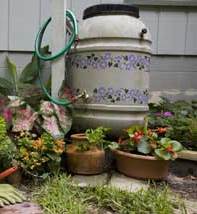
Image Credit: UF / IFAS
Flush High Irrigation Bills Down The Drain !
- Build A Rain Barrel
- Find Out How at our Workshop
- Saturday October 12th 2013 9am-12pm
- Location: Washington County Ag Center 1424 Jackson Ave
- UF / IFAS Washington County Extension 1424 Jackson Ave. Chipley, FL. East Wing Conference Room
You will engage in hands on construction of a rain barrel to take home and use to water your garden. All supplies will be furnished by the UF / IFAS Washington County Extension Master Gardeners at a cost of only $40.00 per person / barrel ! $10.00 to audit without barrel.
Call Matt or Cynthia at the Washington County Extension Office to
register at 850-638-6180 or email Matt at mjorwat@ufl.edu
or email Matt at mjorwat@ufl.edu
Master Gardner Advanced Training CEU’s offered with approval of your County Extension Agent
2013 Fall Rainbarrel Workshop Flyer
by Julie McConnell | Sep 9, 2013
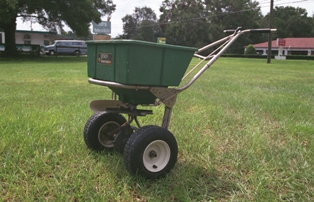
Fertilizer Spreader: Image Courtesy UF / IFAS Extension FYN Program
Although temperatures are still hovering around 90° F, the last fall fertilization date is approaching quickly. Mid-September is the
deadline for applying fertilizer to warm season turf-grasses and landscape ornamental plants for the year. Why is September 15 the cutoff date? In North Florida, our estimated first frost date is November 15. When fertilizer is applied the nutrients encourage new growth that typically takes about 6-8 weeks to become “hardened off” and able to tolerate low or freezing temperatures. So, simply backtracking on the calendar gives you an idea of when to make the last application of fertilizer (if needed).
If September 15 is at the end of our warm season feeding schedule, the next question should be “when should I fertilize in the spring?” Although Northwest Florida’s average last frost date is listed as March 15, UF/IFAS Turf Specialist Dr. Bryan Unruh does not recommend fertilizing before April 15 in the panhandle. There are two main reasons for this later date. One is that the March 15 last frost date is an estimate, many times cold weather follows a warming trend in late winter/early spring. During April of this year warm weather was followed by cool temperatures with cold winds that caused landscape plant damage. If fertilizer was applied before this weather arrived, some cold damage may have been evident this spring in affected landscapes. The second reason is that if fertilizer is applied to turf or plants that are not actively growing and using those nutrients, it may leach out of our sandy soils. Nutrients do not wait for plants to use them; they can be washed out and become a source of nonpoint source pollution.
To read more tips on fertilizing visit EDIS ENH1174 “The Lawn Fertilizer Toolbox”





